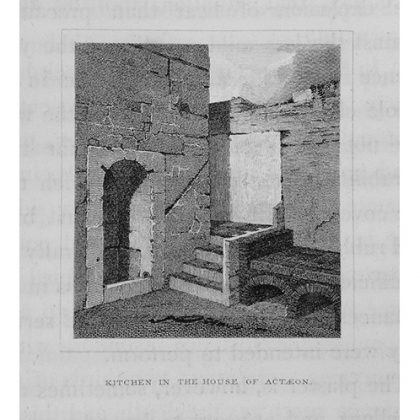Interpretive battlegrounds: Melancholy, spiritual experience, and dissent in early modern England
In a spiritual narrative published in 1672, Charles Langford lamented that some would deem his descriptions of visions and temptations “as meer Fictions, and the issue of a melancholly brain.”[1] Fifteen years earlier, Katherine Gell had complained to the minister Richard Baxter that his diagnosing her with melancholy failed to recognise her religious troubles as “reall”.[2] Wrestling with these external judgements, both writers rejected the idea that the bodily illness of melancholy was to blame for their struggles. Instead, they insisted that their experiences were harrowing, but meaningful, spiritual afflictions.
It is efforts such as these, made both explicitly and implicitly, that my article in the Historical Journal explores. Focusing on a period in which expressions of intense religious emotion were increasingly seen through a more medical lens (1650 to 1700), I investigate what role Presbyterian and Independent individuals understood melancholy to play in their spiritual experiences, and why they insisted on the interpretations they did. By centring on the voices of sufferers themselves, I demonstrate that these writers’ approaches to melancholy were multi-layered: They involved both gendered and denominational aspects, and changed over time. Moreover, their interpretations sometimes pushed back against prescriptive teachings, and were not always in line with the views of those around them.
One of many factors which influenced how these writers positioned themselves in relation to melancholy was external criticism – especially from their theo-political opponents. With strongly emotive forms of piety falling out of favour with the established church, it was common for accusations of melancholy, and therefore irrationality, to be levelled at opposing groups (e.g. some conformists at nonconformists, or some Presbyterians at Quakers). The wholesale nature of these accusations was particularly useful: the perceived dangers of Calvinism, for example, could be criticised in one fell swoop by labelling all ‘Puritans’ as melancholic and, after the Restoration, all nonconformists – regardless of their significant differences – could be homogenously pilloried through the same method.
In part because these accusations were so effective at stripping opponents of authority in a sweeping manner, similar attacks were made in other confessional conflicts across Europe – and continue to be used in a range of contexts today. For instance, a common method for delegitimizing the views of climate change campaigners is to label them indiscriminately as ‘fanatics’, ‘crazy’, or ‘insane’, regardless of whether they peacefully protest or carry out more radical acts. Similarly, climate sceptics tend to present climate scientists and campaigners as ‘alarmist’ on social media, while describing themselves as ‘realist’.[3] While there are significant differences between these contemporary and historical conflicts, we see one important commonality: Competing groups grapple for ownership of ‘rationality’ and make accusations of its apparent opposites – ‘madness’ and ‘irrationality’ – in doing so. Both now and then, it is only by unpacking these accusations and working against their homogenizing effects that we can reach nuanced understandings of their targets’ own views and the contexts in which they were made.
Read the full open-access article here.
[1] Charles Langford, Gods wonderful mercy in the mount of woful extremity (London, 1672), sig. A4r.
[2] Katherine Gell to Richard Baxter, 25 Aug. 1658, London, Dr Williams’s Library, RB/2/5.5.
[3] Stella Levantesi, ‘“Enemies of Society”’: How the Media Portray Climate Activists’, 17 October 2023, Green European Journal, https://www.greeneuropeanjournal.eu/enemies-of-society-how-the-media-portray-climate-activists/
Melancholy, Spiritual Experience, and Dissent in England, c. 1650–1700 by Finola Finn
——————————————————————————————————————–
Image caption: Facsimile of original frontispiece of An Exact collection of the choicest poems & songs, relating to the late times, & continued by the most eminent wits, from 1639 to 1661 (London, 1662), The National Library of Scotland, Glen. 119, used under CC BY 4.0.





